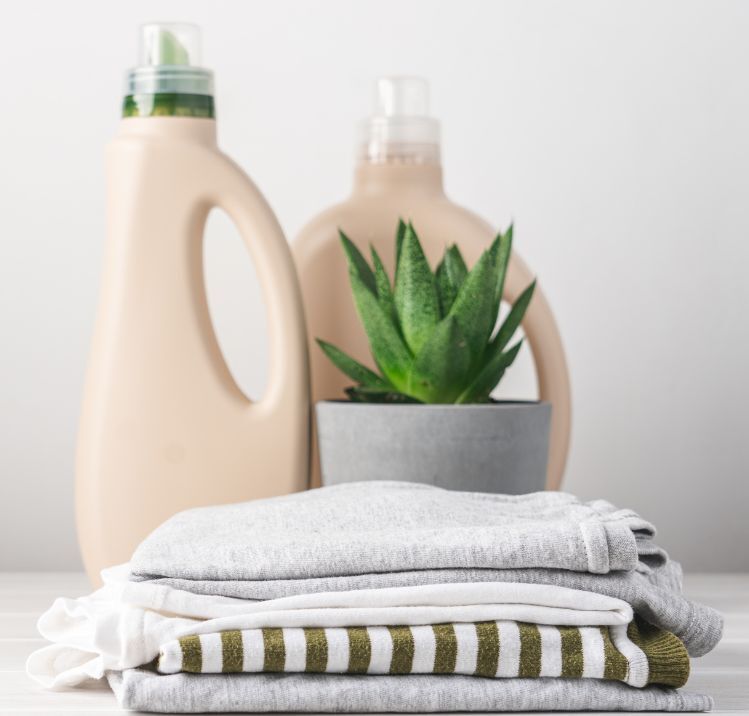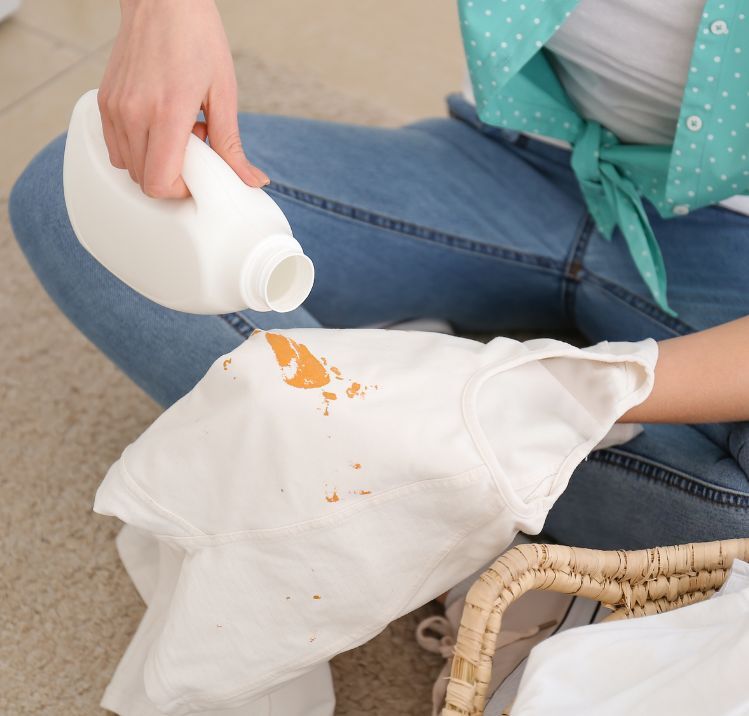
The Ultimate Clothing Care Guide: Ten Tips on How to Properly Take Care of Your Clothes
To keep your wardrobe looking sharp and to lengthen the lifespan of your clothing, it's essential to take good and proper care of your clothes. Doing so will not only keep your garments looking fresh for longer, but will save you some pennies in the long run too! By taking the best care possible of your clothing, you'll not only maximise the wear and value for money you get out of your already purchased pieces, but you'll also reduce the regularity with which you need to replenish your closet. This means a win-win for both your wallet and the planet, as fewer purchases, less clothing waste and certain clothing care measures – like more eco-friendly washing tactics – have an undeniably positive environmental impact too! So, we hear you ask, what steps are required to look after your clothing well? Let us take you through our clothing maintenance top tips, covering everything from washing, wearing, drying, and hanging your items with extra special care. With our advice, we're here to simplify matters and help make showing a little love to your favourite clothes ultra-easy!
What is the meaning of clothing maintenance?
First things first, and before we get going with our top tips and tricks, let's unpack what clothing maintenance actually means. Essentially, it refers to looking after and preserving your clothes, so that they stay fresh by keeping their original quality, colour and fabric texture. Clothing maintenance involves all sorts of processes and actions, including careful washing techniques and reparations, that result in your items remaining as good as new, despite regular wear.
1. Caring for your clothes means washing them less!
We can't emphasise it enough – only wash your clothes when you need to! However much precaution you take when cleaning clothes, washing them always runs the risk of causing damage to the fibres of their fabric, leading to the appearance of wear and tear over time. Texture maintenance and colour preservation are achieved through less frequent washes. Essentially, fewer cycles in the machine will reduce colour fading and stop your items from becoming bobbly, thereby increasing the longevity of your most-loved looks.
If an item isn't dirty, you can usually just hang it to air, so it smells fresh – either outside, near a window, or in a steamy bathroom. Of course, there are some exceptions to the rule: much like your daily underwear, workout gear is best washed after every wear (presuming you've exercised!) due to its close contact with the skin. However, the majority of clothes can be worn multiple times before they need a trip to the washing machine.
As well as helping your clothes stay durable and in good condition for longer, fewer washes saves water and energy, leading to beneficial effects on the environment.

2. Read and follow the instructions on your garments' clothing care labels: learn how to understand what each symbol means
When it comes to taking good care of your clothing, paying attention to the instructions on each garment's care label is key! The guidelines on every label are unique to the garment, so reading and following them to a tee is your best bet for making your items go the distance. Washing, ironing, bleaching, tumble drying and dry cleaning as indicated is the trick to items that last for the long haul. For help understanding washing label symbols, consult our guide to clothing care labels.
3. Wash your items with care
As well as following the washing instructions depicted on your garment's care label, there are a few other things you can do to increase the lifespan of your items:
- • Wash your items inside out: this helps prevent colour fading, protects prints and patterns, and reduces snagging and pilling caused by friction.
- • Place delicate items in a mesh laundry bag: this will help maintain the texture of your garments.
- • Wash similar colours together: this will preserve the colour of your clothing.
- • Wash silk and linen items on a delicate cycle: a gentler wash will minimise friction, resulting in better fabric protection.
- • Avoid overfilling the washing machine: this will lessen the extent to which garments rub against each other, and result in cleaner, fresher smelling clothes.
- • Wash your clothes at low temperatures: unless higher temperatures are required for hygiene reasons, you can often get away with putting your clothes through an eco-mode wash, that's sometimes as low as 20°C.
4. Limit trips to the dry cleaners
Because dry cleaning is a highly intensive chemical process, it not only has a negative environmental impact but can also do some damage to the fibres of the garment you've opted to get dry cleaned. Thankfully, all our items at Atlas For Men don't require dry cleaning – and we actually advise against this cleaning method for our clothing. However, even for many 'dry clean only' items, a delicate wash generally passes.

5. Store your clothes carefully
Another way to look after your clothes is to stow them away carefully, particularly at the end of each season. Cool, dry and well-ventilated environments away from direct sunlight make the ideal home for your clothes. By storing your clothes in a spacious setting, you'll also keep them smelling fresh, prevent wrinkling and, by stopping items from rubbing against each other, limit colour loss and texture change from friction.
While space-saving, vacuum-sealed bags should be used with care and are not a long-term storage solution. Despite being airtight and therefore preventing musty odours and exposure to moths, the compression these bags induce can cause damage to the fibres of certain clothes that weren’t designed to be compressed (like jumpers or structured pieces). Using vacuum storage bags also risks embedding creases in your clothing that will prove hard to get out.
Here are a few further storage tips to keep in mind for longer lasting garments:
- • Favour wooden or padded hangers, to help garments hold their shape and to avoid stretching the shoulders of your clothes.
- • Fold clothes along the seams so they maintain their shape.
- • Ensure items are clean before they are stored.
- • Store knitwear (whether made from wool or synthetic fibres) alongside lavender or mothballs to protect against moths.
- • Consider using breathable garment bags for protecting extra-special pieces.
6. Use eco-friendly laundry products
Choose your clothing care products wisely! Eco-laundry powders and natural laundry detergents are free from harmful chemicals and tend to be gentler, meaning they can be kinder to your clothing than conventional products. You may also wish to use eco-friendly fabric softener too, which will not only keep your clothes soft, but also banish wrinkles and static, all while protecting the colour of your clothing.
7. Air dry your clothes
Where possible, air dry (in other words, drip dry or line dry) your clothes. Compared with tumble drying, this method is kinder to your clothes, forgoing friction which can result in wear and tear, and avoiding heat that can shrink or enlarge your items and impact their colour. As well as being better for your clothes, this energy-conserving drying method is far more environmentally friendly too.
8. Remove stains quickly
Treating stains immediately improves your chances of avoiding long lasting damage to your garments. The longer a stain remains on a piece of clothing, particularly one made from naturally absorbent cotton, the harder it is to get out! As a first port of call, put a little bit of mild detergent, washing up liquid or soap onto the problem area and gently work it into the fabric with a little water. Then rinse with warm water, before washing the garment in the machine. Avoid rubbing the stain too aggressively, as you risk discolouring or damaging the fabric on that particular patch of your item.
9. Repair clothes
To enable your clothes to go the extra mile, give damaged garments a new lease of life by repairing them. To keep damage to a minimum, it's best to react fast to the first signs of wear and tear. If you've got a hole in your garment, for example, patch it up early on before it grows. Follow our guide to how to repair a hole in your clothing right here! Similarly, if a button comes loose, sew it back into place before it falls off and you lose it completely, or before it tugs on your garment and misshapes it. Again, for guidance, consult our blog post on how to sew a button.




10. Wear your clothes on rotation
It's not particularly surprising but, wearing the same item on repeat will result in it looking a little tired over time, which is bittersweet news for the clothes you love most. Rotating through your wardrobe is therefore a great way to ensure individual pieces stay in good nick for longer. Thankfully, when it comes to items you adore, multipacks are ideal for skirting around this dilemma, enabling you to enjoy a similar look on a frequent basis, without over-exposing one particular piece of clothing to general wear and tear.
Clothing care hacks completely mastered!
And there you have it – our ten tips for caring for your clothes, so you can lengthen their lifespan and feature them in your repertoire of outfits for longer. Looking after the items you've invested in will result in more bang for your buck, let you shine in your favourite fashion pieces for a prolonged period, and will help reduce unwanted clothing – which in turn has beneficial consequences for the planet. For further know-how when it comes to clothing maintenance, why not consult our full array of clothing care advice.